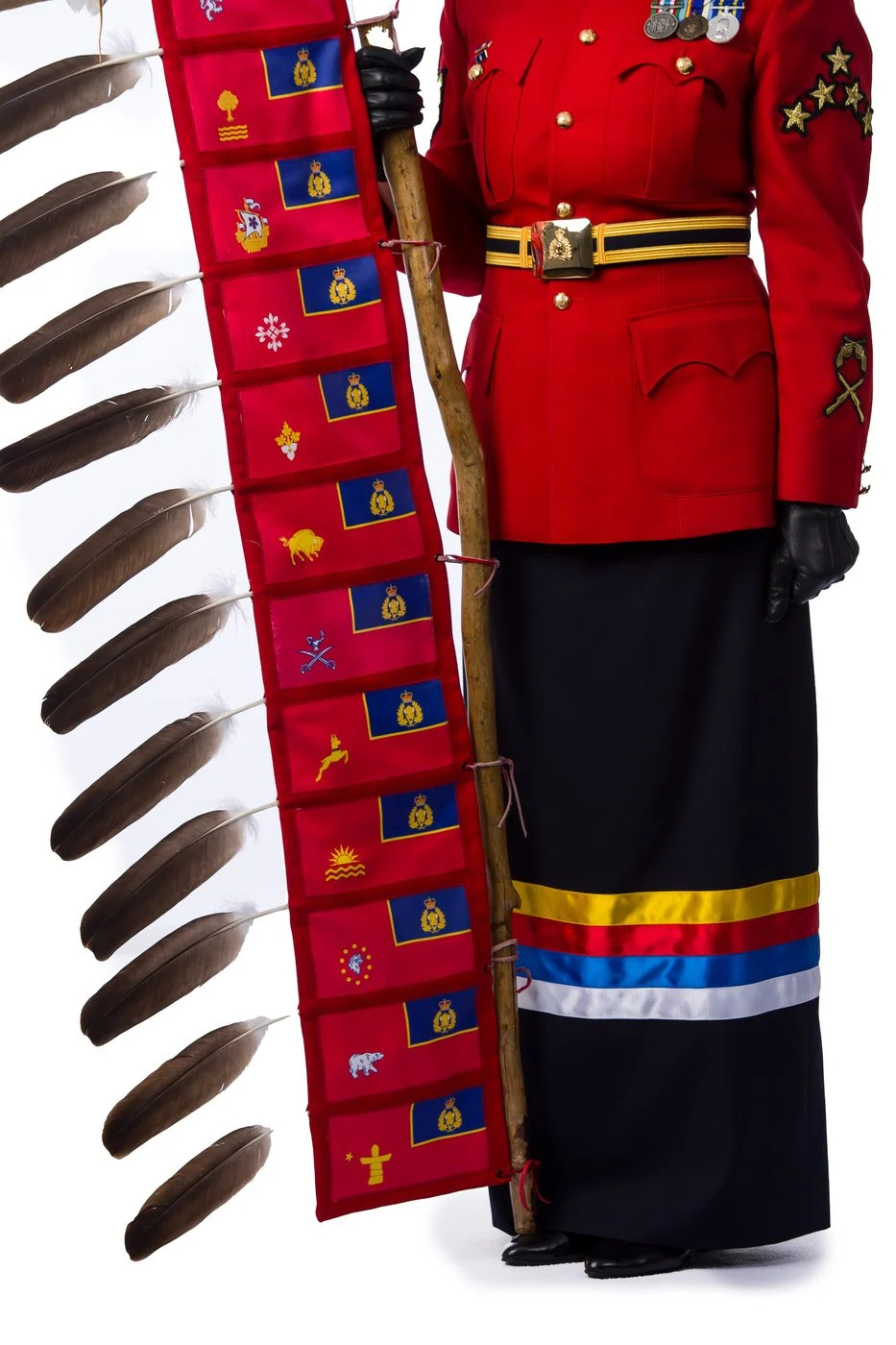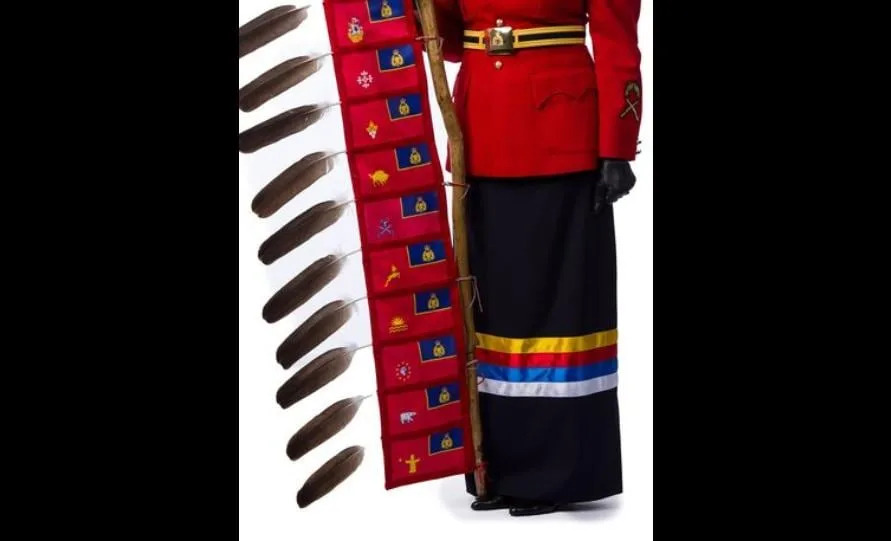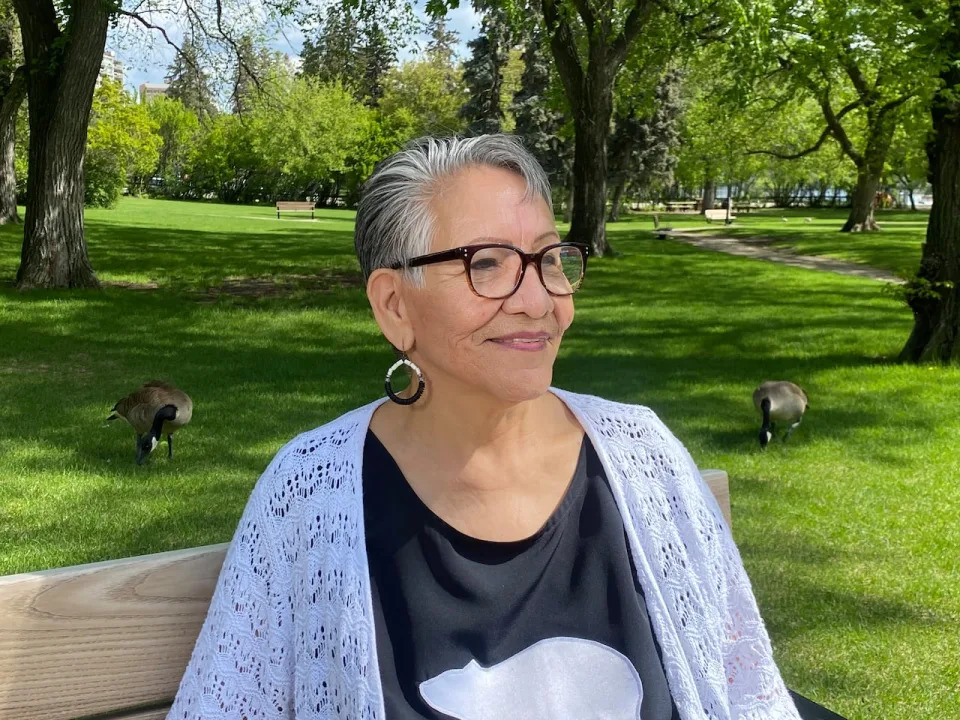The Canadian Press
Thu, May 23, 2024

OTTAWA — The RCMP has added a traditional Indigenous ribbon skirt to its uniform.
Commissioner Mike Duheme has announced on social media that officers can now wear the ribbon skirts when donning the red serge.
He says the addition demonstrates the RCMP's commitment to reconciliation, equity, diversity and inclusion.
The RCMP did not immediately provide more details.
Officers have also been allowed to incorporate eagle feathers and the Métis sash into their uniforms.
The national force has aimed to build bridges with Indigenous communities for the role it played in colonialism.
This report by The Canadian Press was first published May 23, 2024.
RCMP ribbon skirt initiative continues to draw mixed reviews
CBC
Sat, May 25, 2024

The RCMP ribbon skirt as shown on social media. (Royal Canadian Mounted Police/Facebook - image credit)
The national police force is expanding its ceremonial uniform dress code, adding ribbon skirts as an option for Indigenous women and two-spirit employees. It's a decision that has been met with a range of public feedback, from enthusiasm to criticism.
The RCMP announced the initiative on Wednesday with a photo featuring a headless Mountie wearing a ribbon skirt featuring the colours yellow, red, blue and white — meant to represent both the four directions and the RCMP colours.
The traditional skirts have different meanings for each person who wears them, but for many, the skirt is a symbol of resilience.
Knowledge Keeper and residential school survivor Judy Pelly was moved to tears when she saw the news. In 2020, Pelly's grand-daughter, Isabella Kulak, was shamed by a staff member at her school for wearing a ribbon skirt, an incident that garnered international attention.
Pelly said the RCMP ribbon skirt is a positive step forward to celebrating Indigenous women and reconciliation.
"It's so heartwarming," said Pelly, an Anishinaabe woman from Cote First Nation.
"[Ribbon skirts] mean a lot to us. They're our connection to Mother Earth, our connection to being the foundation of our communities, and also women stepping up and being proud of who they are."
Others doubt the RCMP's intentions are sincere.
"A lot of people out there are very upset because of the colonial history of the RCMP, what they've done to us as a people, and now here they are again, colonizing our identity, what we choose to wear," said Jessica Gordon, who is the director of Indigenous Relations and Reconciliation for YWCA Canada and a member of the Pasqua First Nation.
Gordon said the RCMP is displaying the ribbon skirt initiative like an act of reconciliation, but she feels it is performative.
"Throwing a few ribbons on a skirt — it's not really getting to the root causes of colonialism and what they have to do to repair those relationships."
Uniform skirt lacks individuality, Gordon says
The RCMP said, in a written statement, that the ribbon skirt initiative came from the Women's Indigenous Network, which is an employee-led, force-wide network for RCMP Indigenous women and two-spirit employees.
But Gordon criticized the RCMP's approach to the uniform ribbon skirt, saying it lacks individuality and uniqueness.
"I think if [RCMP] want to show their Indigenous members that they want to hear them — and they want to be able to show their pride and who they are as Indigenous people — they should allow them to wear their own skirts made by themselves or their family members, something that means something to them," Gordon said.
She said this would respect the individualism, empowerment and uniqueness that is shown and felt through a ribbon skirt.
RCMP say the usage of the ribbon skirt went through broad internal and external consultations before the Commissioner "approved the addition of the RCMP Ribbon Skirt as an Indigenous cultural item of honour and distinction."
It noted the Eagle Feather, for First Nation members, and the Métis Sash, for Métis members, are also approved Indigenous cultural items of honour and distinction.
The RCMP said some examples of occasions that members can wear an approved cultural item include: receiving an award, formal spiritual services, weddings, mess events, cadet troop graduations, formal dinners and ceremonies, school talks or presentations, as well as media or community events.
As of May 2024, there were 311 Indigenous RCMP members who identified as women, non-binary or Two-Spirit. They will have the option of wearing the skirt at such events.
Building bridges important, says Pelly
Knowledge Keeper Pelly acknowledged the dark role the RCMP played in colonization and residential schools, as well as ongoing issues of systemic racism and a distrust toward police stemming from intergenerational trauma.
But she believes the police force is taking steps to acknowledge these harms and make changes.

Judy Pelly, an Anishinaabe woman from the Cote First Nation, never imagined ribbon skirts would become an official part of the RCMP. She says it's a positive step forward.
Judy Pelly, an Anishinaabe woman from the Cote First Nation, never imagined ribbon skirts would become an official part of the RCMP. She says it's a positive step forward. (Jason Warick/CBC)
"None of us is responsible for what happened in that history. None of us alive were there, but we can do what we can to go forward," Pelly said.
"Now we're building bridges."
She said she's excited to see ribbon skirts more widely worn and respected.
"It's become quite a sense of pride for me. I wear ribbon skirts every day," Pelly said.
"It helps me ground me, and who I am and never to forget that we are here. We're Indigenous women. We're not going anywhere."
No comments:
Post a Comment